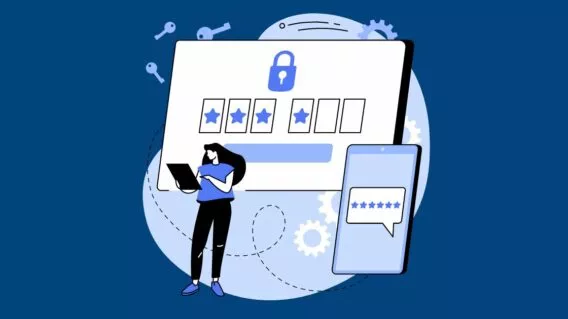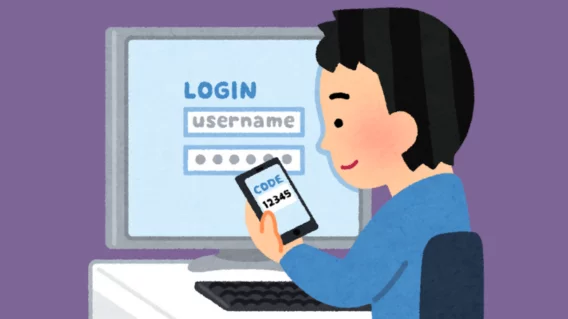How Cyber Baddies Bypass MFA and What You Can Do to Stop Them

Imagine logging into your bank account and finding a suspicious message – someone else is trying to access it! Your heart jumps into your throat. You scramble to change your password, a cold sweat forming on your brow. Relief washes over you as you secure your account, but a nagging question lingers: how did they almost get in, even with MFA enabled?
This is a chilling reminder of the ever-evolving landscape of cybercrime in the digital age. Social media accounts get hijacked, financial information gets stolen, and personal data gets exposed – all because cyberbaddies have developed cunning methods to bypass even the most robust security measures, like Multi-Factor Authentication (MFA).
But before we delve into those bypass tactics, let’s solidify our understanding of MFA itself.
Understanding MFA and Its Importance
Multi-Factor Authentication (MFA) acts as a fortified gatekeeper for your online accounts. It requires users to present multiple forms of verification before gaining access to a system. Typically, these factors fall into three categories:
- Something you know: This is the classic password – a secret combination of characters you (and hopefully only you) know.
- Something you have: This could be your smartphone with an authentication app generating unique codes, or a dedicated hardware token that physically stores your credentials.
- Something you are: This utilizes biometric verification, such as fingerprint scanning or facial recognition, to confirm your identity.
By requiring two or more of these factors, MFA significantly enhances security compared to just a password. Even if a cybercriminal manages to steal your password, they’d still need to overcome the additional hurdle presented by the second factor, making unauthorized access much more difficult.
Cracking the Castle: How Cyber Baddies Bypass MFA
While MFA adds a significant layer of security, cybercriminals are constantly innovating ways to circumvent it. These methods exploit weaknesses in both technology and human behavior. Here’s a breakdown of some common MFA bypass tactics:
- Fraudulent Social Engineering: This tactic preys on human trust and psychology. Phishing emails, phone calls (vishing), and SMS scams (smishing) are all tools in the Cyberbaddie’s arsenal. They might impersonate a trusted entity like your bank or a tech support representative, tricking you into revealing your login credentials, MFA codes, or even clicking malicious links that compromise your security.
- Swapping SIM Cards: This sneaky maneuver involves convincing a mobile carrier to transfer your phone number to a SIM card controlled by the attacker. With your number diverted, they can intercept any SMS-based MFA codes sent for login attempts, essentially unlocking your accounts.
- Man-in-the-Middle Mayhem: Imagine a hidden eavesdropper on a phone line. In a MitM attack, attackers position themselves between you and the login server. They might intercept your login credentials and the MFA code during communication, granting them unauthorized access.
- Taking advantage of vulnerabilities in MFA systems: No system is perfect, and some MFA implementations might have inherent vulnerabilities. Attackers might exploit these weaknesses by brute-forcing one-time codes, stealing authentication cookies used for session verification, or even targeting specific flaws in certain MFA app designs.
- Targeting Unenrolled Accounts: Just like an unlocked door is an open invitation for a burglar, accounts without MFA are prime targets for attackers. If MFA hasn’t been activated, they can simply gain access with stolen credentials.
- MFA Prompt Bombing: This method bombards the victim with constant MFA push notifications on their phone, hoping for an accidental approval out of frustration or fatigue. Imagine getting dozens of “Approve Login?” requests in a short period – it can be overwhelming.
These are just some of the ways attackers try to bypass MFA. By understanding these methods, you can be more vigilant and take steps to protect yourself.
How to Detect MFA Bypass Attempts
While completely preventing detection is part of an attacker’s strategy, there are signs that might indicate an attempted MFA bypass:
- Unusual Login Attempts: Suspicious login attempts from unrecognized locations or devices can be a red flag. Monitoring for multiple failed login attempts or logins from geographically distant locations can help identify potential threats.
- MFA Prompts at Unexpected Times: Receiving MFA prompts when you haven’t tried to log in could indicate that an attacker is attempting to gain access to your account. Such unexpected prompts should be investigated immediately.
- Changes in Account Settings: Unauthorized modifications to your account settings, especially security settings, should raise alarms. Regularly review and monitor account settings to ensure they remain unchanged without your knowledge.
- Monitoring Strategies: Implementing security systems that monitor for these indicators can help identify potential MFA bypass attacks in progress. Using advanced threat detection tools and maintaining vigilance are crucial in detecting and preventing these sophisticated attacks.
Fortifying Your Defenses: How to Prevent MFA Bypass
Multi-factor authentication (MFA) adds a crucial layer of security, but attackers are constantly seeking ways to bypass it. Here’s a comprehensive guide to fortifying your defenses and making MFA even tougher to crack:
Strengthening the Basics
- Strong Password Policies: Enforce strong password policies with minimum length, complexity requirements, and regular changes. Consider a password manager to generate and store unique passwords securely.
- MFA Everywhere: Wherever possible, enable MFA on all user accounts and applications, not just sensitive ones. This significantly raises the bar for unauthorized access.
- Ditch SMS Verification: Opt for authenticator apps like Google Authenticator or Microsoft Authenticator. These apps generate codes offline, making them more secure than SMS which can be intercepted by attackers.
Educate and Empower Users
- Phishing Fighter Training: Regularly update yourself and your employees on cybersecurity best practices, with a focus on recognizing phishing attempts.
- Simulate and Refine: Conduct simulated phishing attacks to test employee awareness and response. This helps identify knowledge gaps and improve overall security posture.
Advanced Security Measures
- Conditional Access Controls: Implement policies that restrict access based on factors like location, device type, or time of day. This adds an extra layer of security by requiring additional verification for suspicious access attempts.
- Risk-Based Authentication: Analyze login attempts for suspicious activity (e.g., unusual locations, frequent login attempts). If deemed risky, require additional verification steps like a secondary authentication code or challenge questions.
Continuous Monitoring and Vigilance
- Monitor for Anomalies: Regularly monitor login attempts and system activity for unusual patterns that could indicate an attack. Set up alerts to flag suspicious behavior for prompt investigation.
- Security Log Review: Make security log review a routine practice. Analyze logs for suspicious activity and investigate any potential breaches promptly.
MFA Bypass Attacks in 2024
As technology evolves, so do cyberattacks. In 2024, we can expect to see a continued rise in sophisticated social engineering tactics and the targeting of vulnerabilities in specific MFA implementations.
How Emsisoft Can Help Fortify Your MFA Defenses
While MFA is a powerful security tool, cybercriminals are constantly developing techniques to bypass it. To effectively defend against these evolving threats, organizations need endpoint and web security solutions that provide comprehensive protection.
Emsisoft’s security suite offers a multi-layered approach to combat MFA bypass attempts:
Emsisoft Enterprise Security + EDR
Robust and proven endpoint security solution for organizations of all sizes. Start free trial- Real-Time Threat Detection: Emsisoft’s solutions continuously monitor user activity and web traffic. This real-time vigilance allows for swift detection of and response to suspicious behavior that might indicate an MFA bypass attempt.
- Phishing Site Blockage: Emsisoft Anti-Malware with Browser Security actively blocks access to known phishing websites. This crucial protection shields users from falling victim to cleverly disguised phishing attempts designed to steal their login credentials.
- Advanced Malware Defense: Malware infections can be a springboard for MFA bypass attacks. Emsisoft’s advanced malware detection capabilities, alongside its real-time protection, safeguard your devices against malicious software that could be used to compromise your security.
Building a Stronger Security Posture
By combining robust MFA implementation with Emsisoft’s comprehensive endpoint and web security solutions, individuals as well as organizations can significantly reduce the risk of falling victim to MFA bypass attacks. This layered approach, combined with user education and centralized management, helps create a more secure environment for all users.


